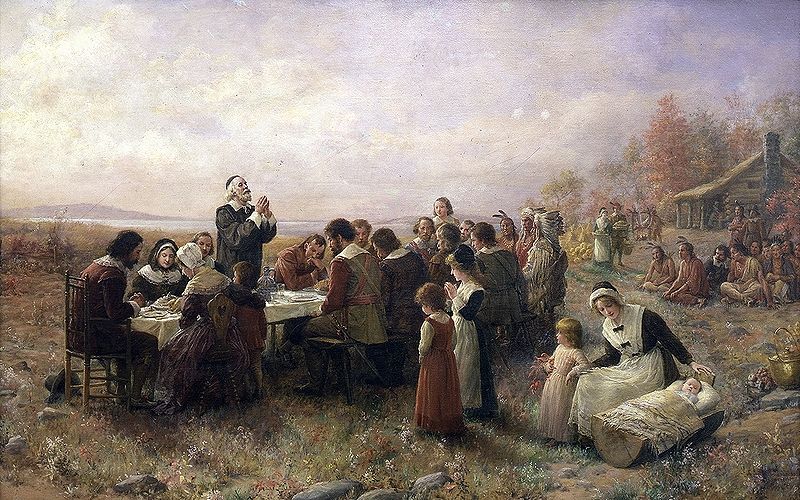Did you know? While pumpkins were certainly a part of the first feast of thanks-giving, they were usually roasted or stewed. And eaten very, very often!
For pottage and puddings and custards and pies
Our pumpkins and parsnips are common supplies,
We have pumpkins at morning and pumpkins at noon,
If it were not for pumpkins we should be undoon."
Pilgrim verse, circa 1633
______________________
Please take some time this week to gather your children, grandchildren, neighbors, or whomever you care about, and teach them of our nation's heritage of gratitude. Some great resources are below, including what George Washington said in his Proclamation for a Day of Thanksgiving. Each generation must learn this, or it dies out, leaving a gaping hole that entitlement and selfishness rush in to fill.
Gratitude is not only the greatest of virtues, but the parent of all the others.
— Marcus Tullius Cicero (106 BC-43 BC), Pro Plancio (54 BC)
The following is from the Providence Foundation's Nov. 2013 newsletter. (Thank you to them!)
Celebrating Thanksgiving
Thanksgiving is an uniquely American holiday. We have been giving thanks to God in private and public from the foundation of the nation. In fact, governments regularly issued official days of Prayer and Thanksgiving from the planting of the first colonies up until the present. Over 1400 Days of Prayer, Thanksgiving, and Fasting were proclaimed by colonial, state, and national governments from 1620-1815, and hundreds more have been issued since then.
A few items to help you remember and pass on our heritage of thanking God include:
Why We Celebrate Thanksgiving
You can use this article to share with your family the origins of Thanksgiving Day.
Some Early Government Thanksgiving Proclamations
1. President George Washington, Proclamation for a Day of Thanksgiving, Thursday, November 26, 1789
2. Governor Thomas Jefferson of Virginia, Thanksgiving Proclamation, December 9, 1779
3. Proclamation for a Public Thanksgiving, New Hampshire, December 10, 1778
4. Proclamation for Thanksgiving Day, Continental Congress, December 18, 1777
Issued during the American Revolutionary War by the Continental Congress, this was the first national Thanksgiving Day in America. The explanation of the proclamation is from W. DeLoss Love, The Fast and Thanksgiving Days of New England (1895). Love lists over 1400 days of prayer and fasting and prayer and thanksgiving observed by civil governments (colonial, state, and national) from 1620-1815.
5. Proclamation for a Day of Thanksgiving and Prayer, Massachusetts, June 29, 1676
On June 20, 1676, the Council of Massachusetts appointed June 29 as a Day of Thanksgiving and Prayer, in response to the colonists’ victory in King Philip’s War. The broadside of this proclamation is the earliest printed thanksgiving broadside known. At the top is the seal of Massachusetts, which shows an Indian speaking the words, “Come Over and Help Us.”

 RSS Feed
RSS Feed